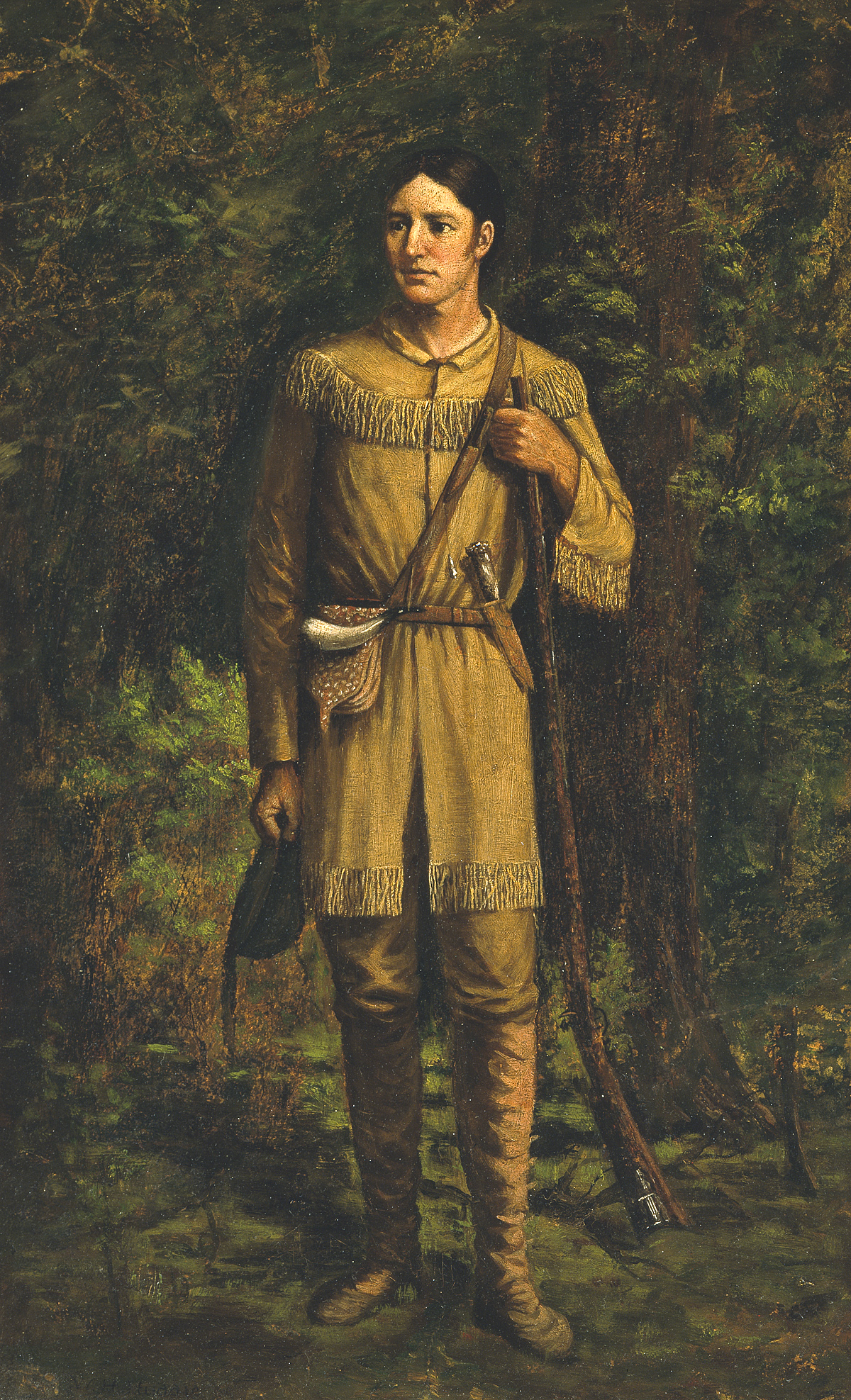March 6, 2010 will mark the 174th anniversary of the epic battle of the Alamo. The Alamo was constructed in 1724 as a Spanish mission. It served as a home for missionaries and their Indian residents. Today, the mission is best known for the thirteen-day siege that occured during the fight for Texas independance, culminating in the final battle on March 6, 1836.
To pay homage to this event in Texas history, I wanted to look closely at the Museum’s sketch of Davy Crockett, one of the most famous defenders at the Alamo. The 1889 oil sketch by William Henry Huddle shows Crockett dressed in what appears to be deer skin hunting clothes. In his right hand he holds his trademark coonskin cap; his left hand grips his gun, Old Betsy. The woods, which were quickly painted, can be seen behind Crockett. Huddle’s sketch paved the way for a larger oil painting currently found in the Texas Capitol.
What I find most interesting about this work of art is the glimpse of Crockett doing something he most loved – hunting. Taken out of the context of the Alamo, which mythologized and immortalized him, he stoically stands as the “King of the Wild Frontier.” I believe if Crockett had lived to see this sketch, he would have been very pleased.
Amy Wolf
Teaching Programs Coordinator

This portrait does not depict a raccoon-skin hat in Crockett’s right hand, yet the portrait in Dallas does.
Correction: The portrait in Austin appears different than this one with a raccoon-skin cap
Ben, I believe this is Huddle’s painting of Crockett from the Texas State Capital. The coonskin cap certainly looks more detailed in the finished painting as opposed to the DMA’s work.
Hello Sarah
Both these portraits are Huddle’s 1889 David Crockett, I don’t know which is the original.
For sometime I’ve speculated that Huddle never intended to depict a raccooon skin, but instead painted a wildcat skin to coincide with Crockett’s character in “Lion Of The West”.
Huddle mistakenly painted the European Wildcat felis-silvestris with the long tail rather than the American wildcat lynx-rufus.
I featured this speculation on a web-site ten years ago and I was recently contacted by someone who pointed out that the cap featured in the two paintings are far different.
I agree, and the dark colored more ambiguous cap in the portrait at Austin, seems to more resemble the same short-tailed wildcat that appeared on Crockett’s head in early illustrations.
Ben, since the DMA’s oil sketch was the preparatory work for the large painting in Austin, maybe Huddle saved more detail for that finalized work. Your take on the cap is very interesting, thanks for sharing.
If we examine both portraits closely, the cap depicted in the DMA’s portrait is clearly different from the painting in Austin. The cap in the Dallas painting looks very similar to to the rufus-lynx (bobcat), rather than a raccoon. In the stage play “Lion Of The West”, the character Nimrod Wildfire wore a cap which he described as a wildcat.
I was completely unaware of the Dallas painting when I created the web-site concerning Crockett’s cap. The question now is, did Huddle make some correction later depicting a raccoon. Was Huddle depicting a European wildcat, or was the painting re-touched years later to coincide with Disney’s “coonskin cap” ?